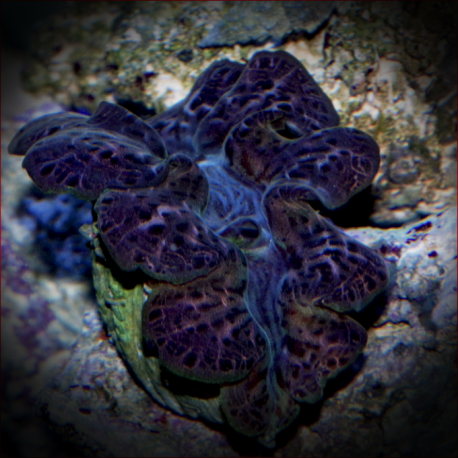More info
Datasheet
| Minimum Tank Size | 200 litres / 52.83 US gallons |
| Maximum Size | 15.0cm / 5.91inches |
| Reef Compatible | Always reef safe |
| Temperament | Peaceful |
| Temperature | 22.2°C / 71.96°F - 25.6°C / 78.08°F |
| Specific Gravity | 1.020-1.025 |
| Carbonate Hardness | 8-12 |
| pH | 8.1-8.4 |
General Description
The Tridacna crocea, also known as the Boring clam, is the smallest species within the Tridacna genus. These clams are often fascinating due to their size and vibrant coloration, making them a notable addition to marine aquariums.
Aquarium Suitability and Demands
Considered suitable with care, the Tridacna crocea presents some challenges in aquarium care due to its delicate nature. High water quality is essential for this species, requiring proper oxygenation to thrive in captivity.
Care and Hardiness
Regarded as delicate, the Tridacna crocea demands meticulous care. It is crucial to maintain water parameters within specific ranges to ensure the health and well-being of these clams. They thrive best in an environment with bright illumination and a minimum tank size of 200 liters.
Reef Suitability
Tridacna crocea is always reef-safe, making it a compatible choice for reef aquariums. Their peaceful temperament further enhances their compatibility with other reef inhabitants.
Aquarium Setup
When setting up an aquarium for the Tridacna crocea, it is vital to provide powerful lighting and maintain excellent water quality. These clams should be placed on a rock within the tank, ensuring maximum illumination to promote their well-being.
Behaviour
Tridacna crocea clams will become attached to rocks or sand over time, exhibiting varying degrees of attachment. Care should be taken not to damage their delicate foot when moving them, and precautions should be taken against pyramid snails that often target clams.
Feeding and Diet
These clams have a common diet of phytoplankton, especially for small specimens under 4 inches in size. Larger Tridacna crocea derive nutrition mainly from photosynthesis, although supplementing their diet with phytoplankton is beneficial for their overall health.
Dimorphism (and captive reproduction If covered)
Tridacna crocea can be bred in captivity, presenting an opportunity for aquarists to acquire captive-bred specimens from local fish stores. Checking for healthy specimens that react promptly to shadows by retracting is essential when selecting these clams.
Habitat and Distribution
The Tridacna crocea is native to various regions, including the East Indian Ocean, West Indian Ocean, Australia, Japan, Indonesia, and the Central/West Pacific. In the wild, these clams can be found in a range of marine habitats, showcasing their adaptability in different environments.

